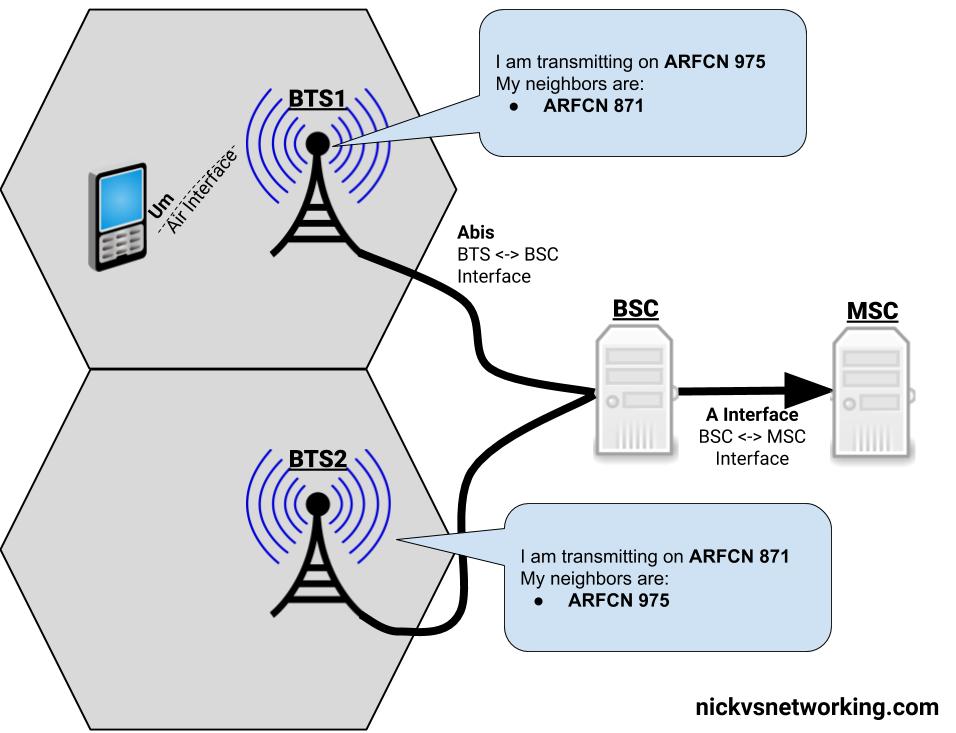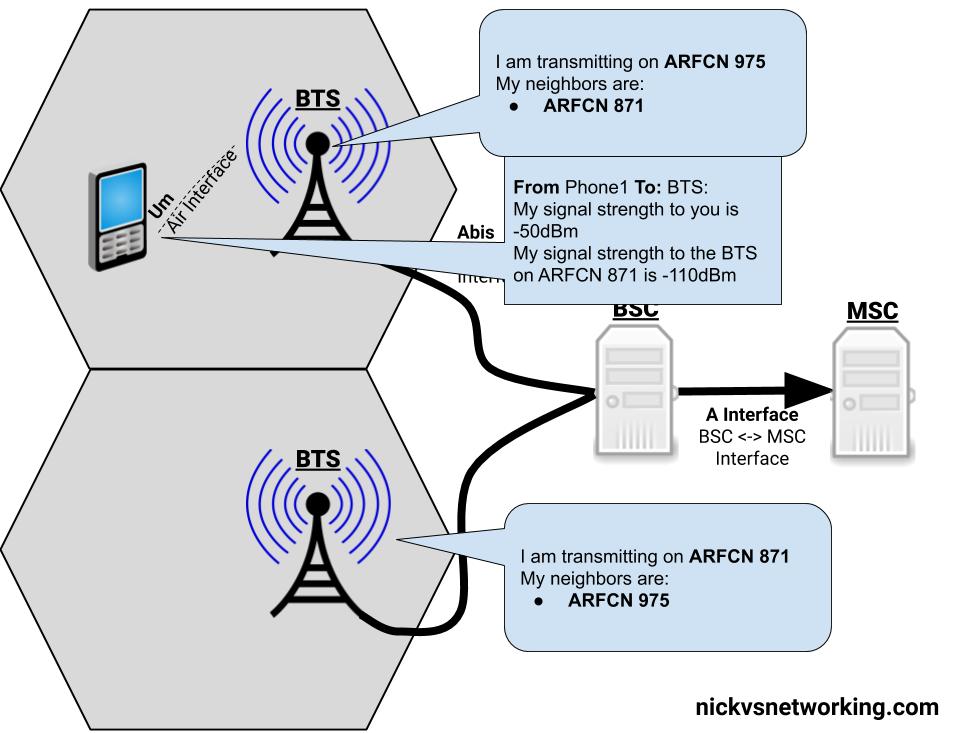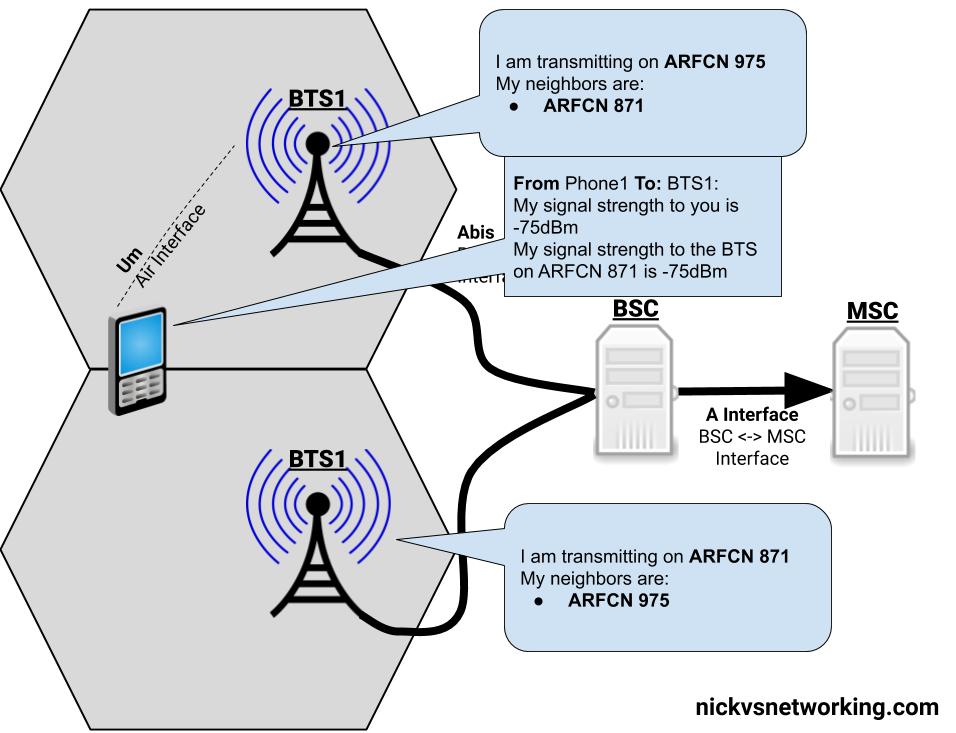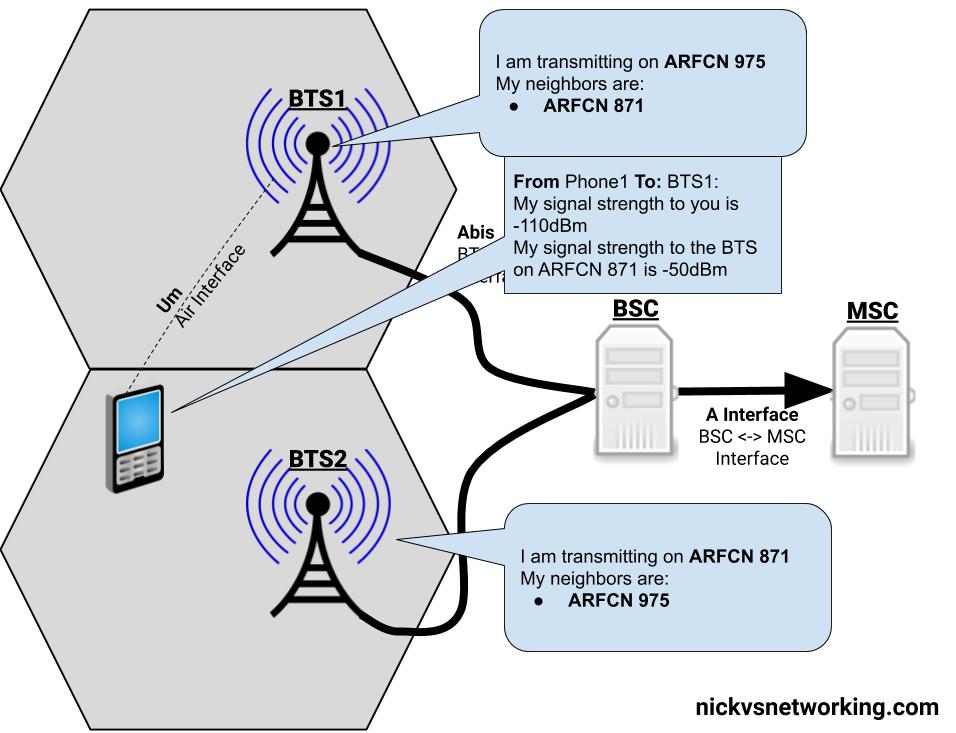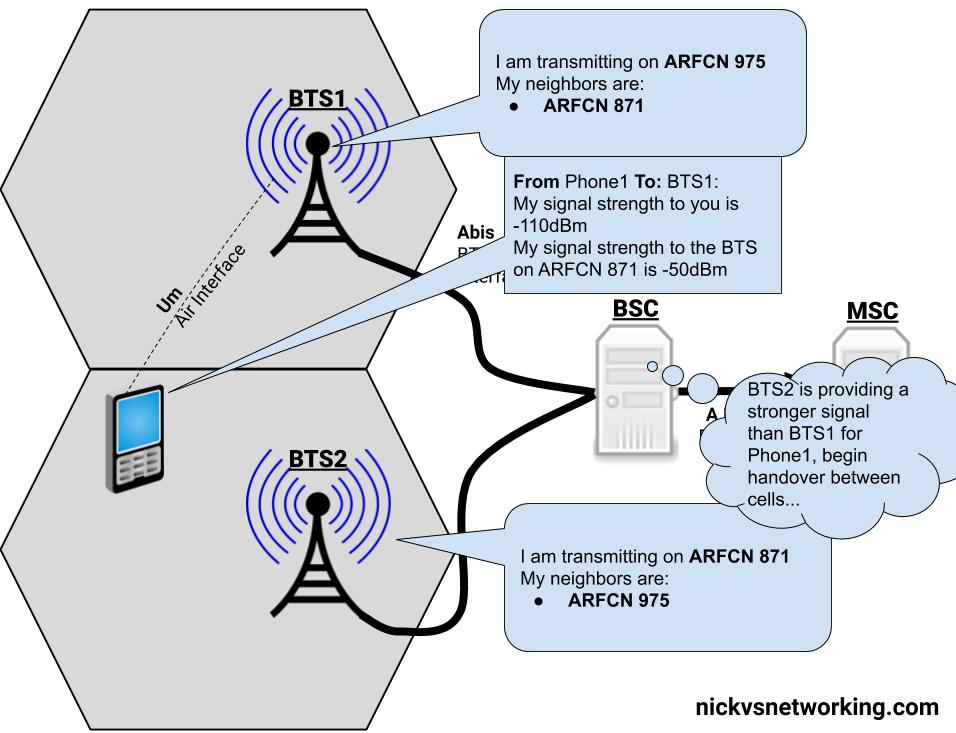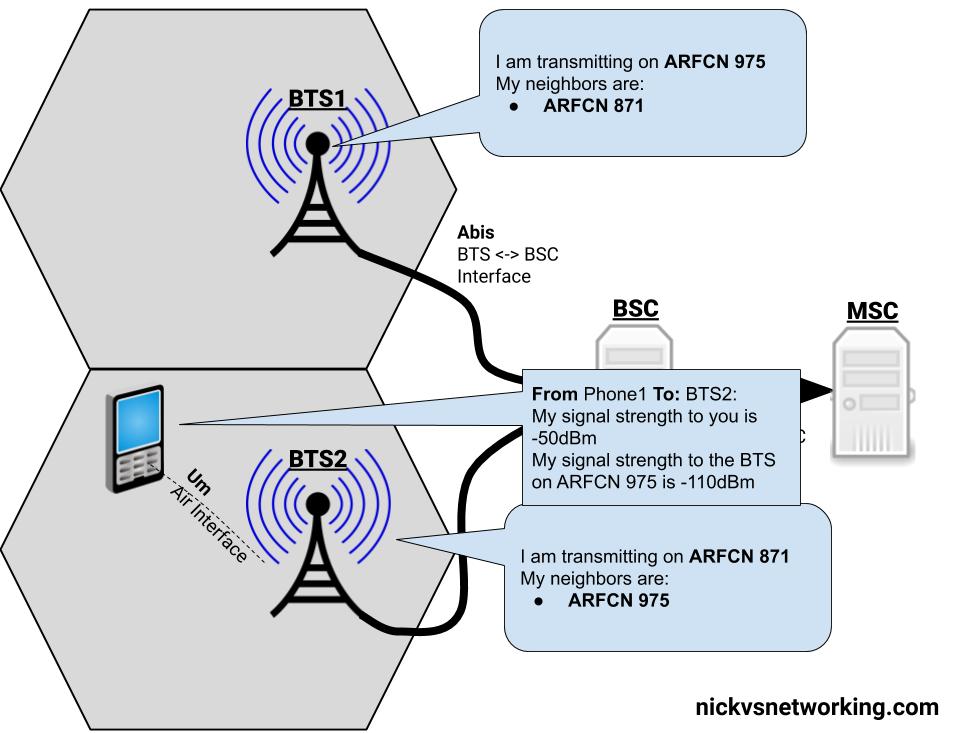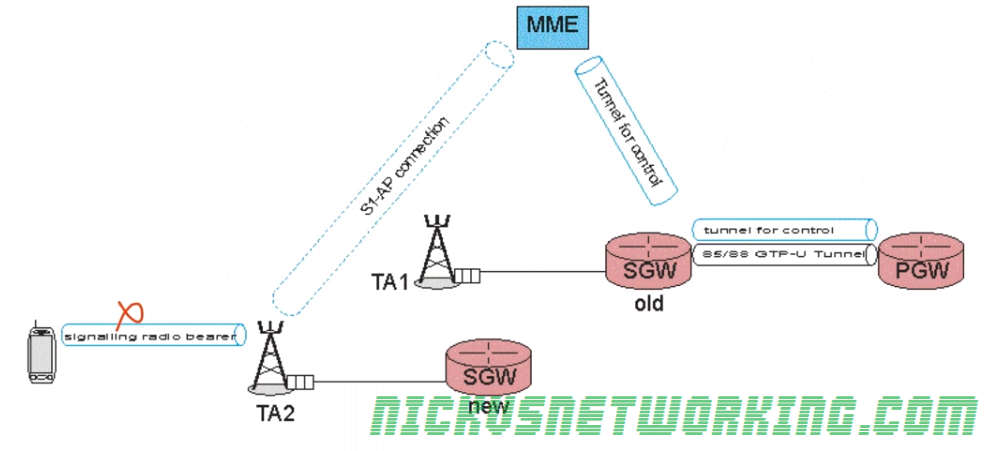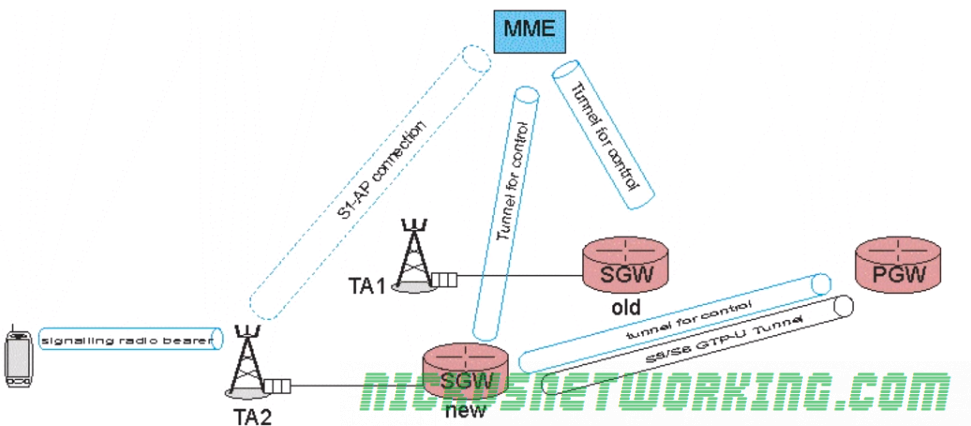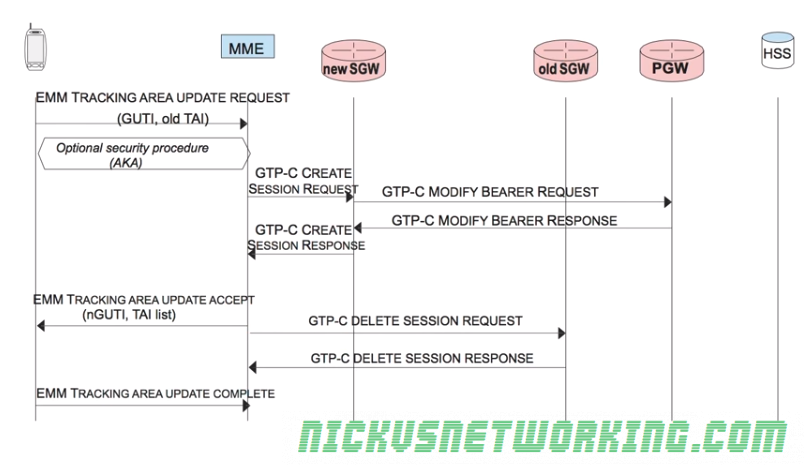With just one cell/BTS, your mobile phone isn’t all that mobile.
So GSM has the concept of handovers – Once BTS (cell) can handover a call to another cell (BTS), thus allowing us to move between BTSs and keep talking on a call.
Note: I’ll use the term BTS here, because we’ve talked a lot about BTSs throughout this series. Technically a BTS can be made up of one or more cells, but to keep the language consistent with the rest of the posts I’ll use BTS, even though were talking about the cell of a BTS.
If we’re on a call, in an area served by BTS1, and we’re moving towards BTS2, at some point the signal strength from BTS2 will surpass the signal strength from BTS1, and the phone will be handed over from BTS1 to BTS2.
Handovers typically only occur when a channel is in use (ie on a phone call) if a phone isn’t in use, there’s no need to seamlessly handover as a brief loss of connectivity isn’t going to be noticed by the users.
Measurements
The question as to when to handover a call to a neighbouring cell, comes down to the signal strength levels the phone is experiencing.
The phone measures the signal strength of up to 6 nearby (neighbouring) BTSs, and reports what signal strength it’s receiving to the BTS that’s currently serving it.
The BTS then sends this info to the BSC, in the RXLEV fields of a RSL Measurement Report packet.
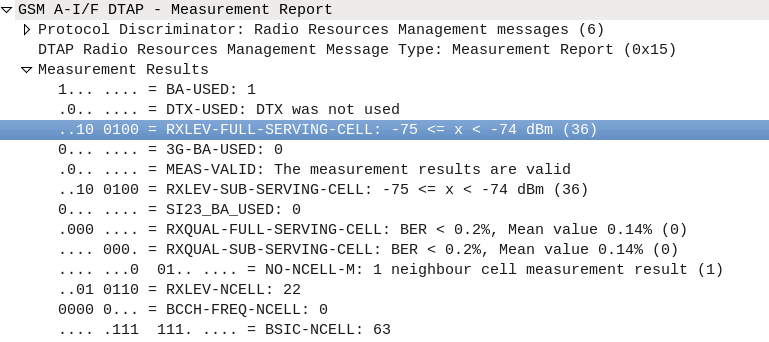
With this information the BSC makes the determination of when to handover the call to a neighbouring BTS.
There’s a lot of parameters that the BSC takes into account when making the decision to handover to a neighbouring BTS, but for the purposes of this explanation, we’ll simplify this and just imagine it’s based on which BTS has the strongest signal strength as seen by the phone.
Everybody needs good Neighbors
Our phone can only monitor the signal strength of so many neighboring cells at once (Up to 6). So in order to know which frequency (known as ARFCNs) to take signal strength measurements on, our phone needs to know the frequencies it should expect to see neighbours, so it can measure these frequencies.
The System Information Block 2 is broadcast by the BTS on the BCCH and SACCH channels, and contains the ARFCNs (Frequencies) of the BTSs that neighbour that cell.
With this info our Phone only needs to monitor the frequencies (ARFCNs) of the cells nearby it’s been told about in the SIB2 to check the received power levels on those frequences.
The Handover
This is vastly simplified…
So our phone is armed with the list of neighbouring cell frequencies (ARFCNs) and it’s taking signal strength measurements and sending them to the BTS, and onto the BSC. The BSC knows the strength of the signals around our phone on a call.
With this information the BSC makes the decision that the serving cell (BTS) the phone is currently connected to is no longer the best candidate, as another BTS would provide a higher signal strength and begins a handover to a neighbouring BTS with a better signal to the phone.
Our BSC starts by giving the new BTS a heads up it’s going to hand a call of to it, by setting up the channel to use on the new BTS, through a Channel Activation message.
Next a handover command is sent to the phone via the BTS it was initially connected to (RSL Handover Command), telling the phone to begin handover to the new BTS and the channel it should move to on the new BTS it setup earier.
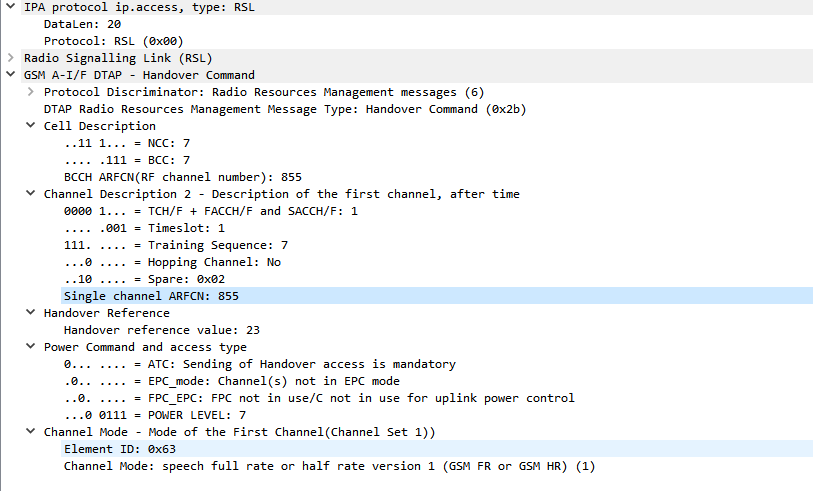
The phone moves to the new BTS, and is acknowledged by the phone. The channels the phone was using on the old BTS are released and the handover is complete.
Simplified Diagram of the Process
There is a lot more to handovers than just this, which we’ll cover in a future post.
